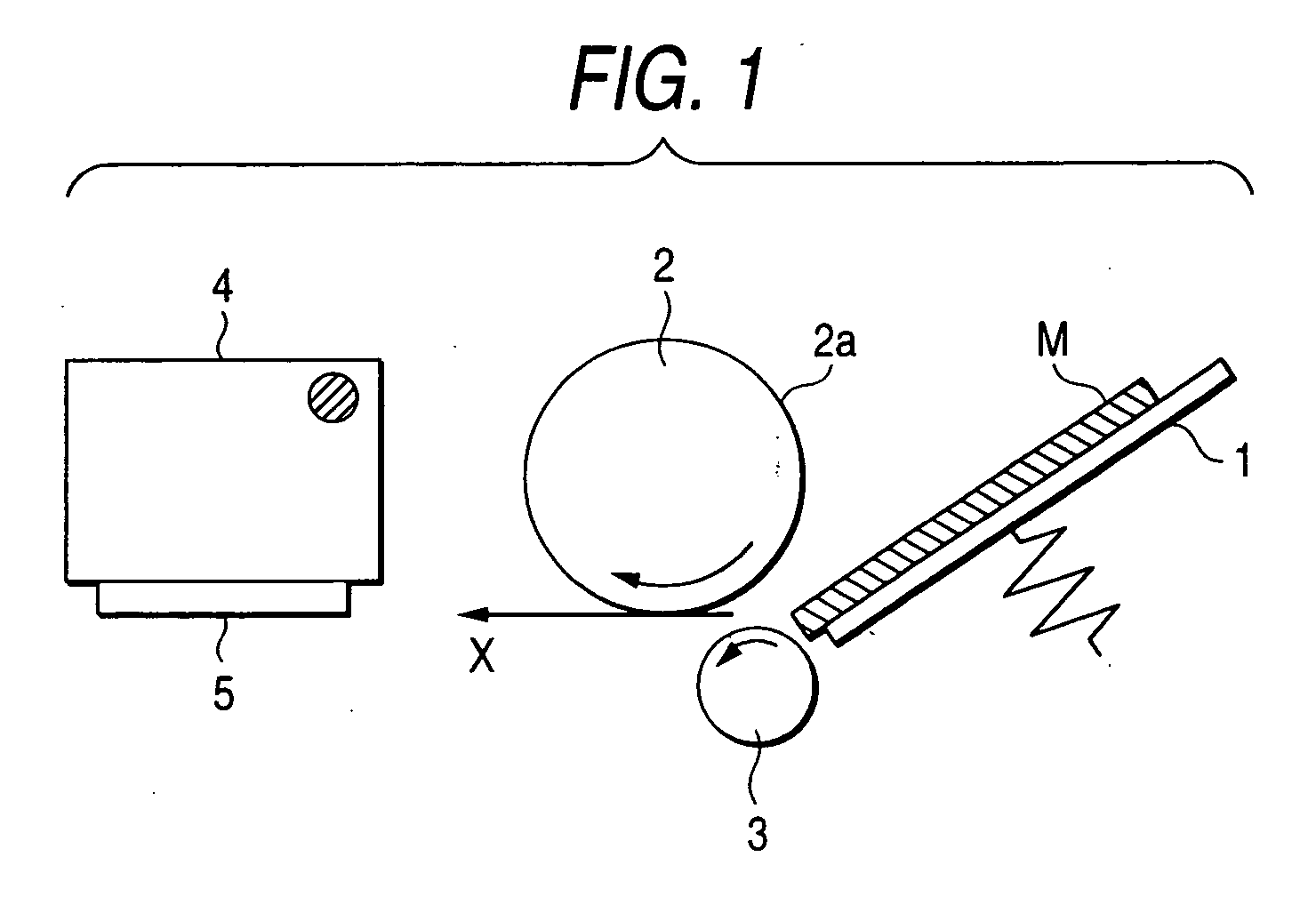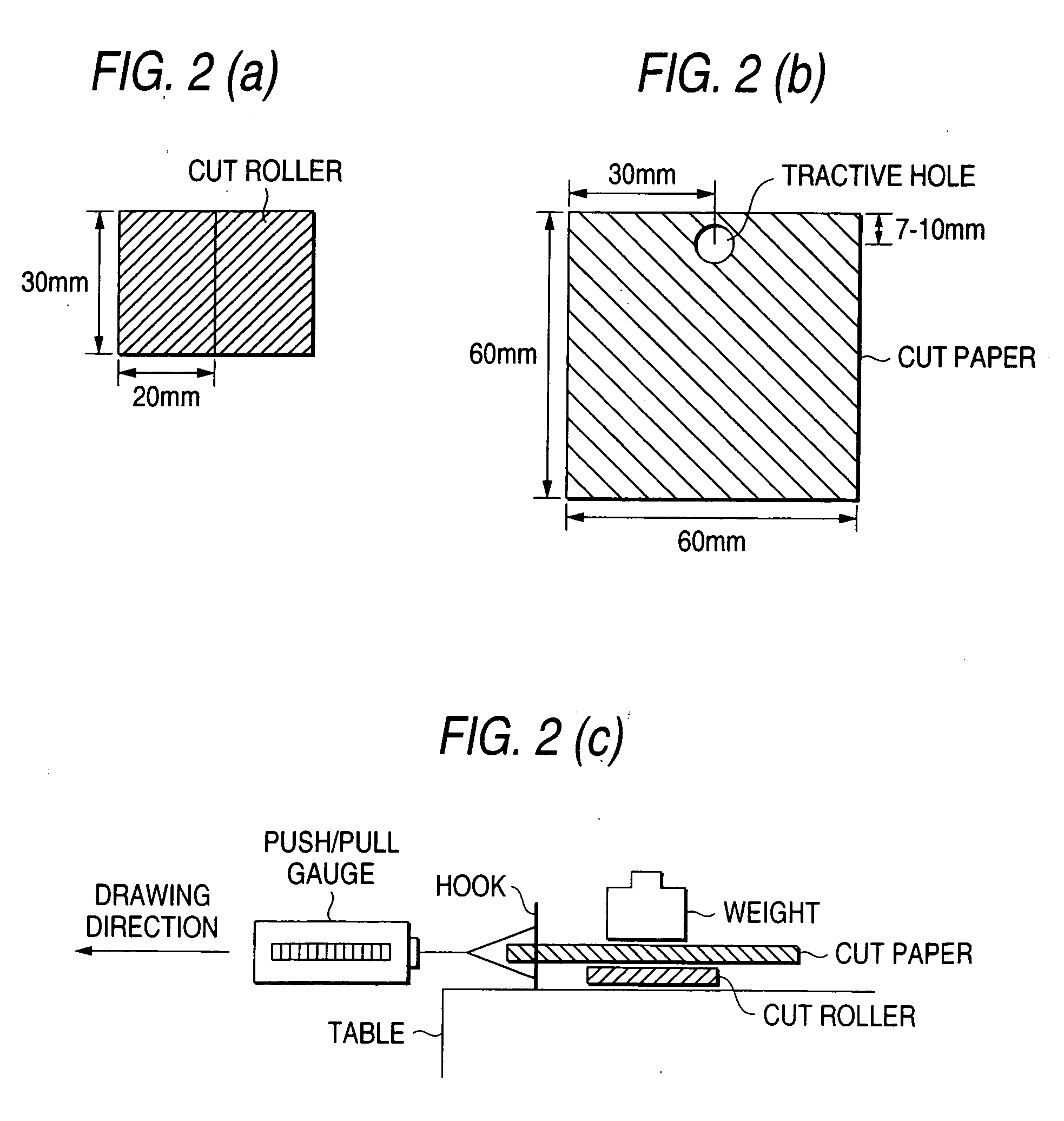Recording paper
a technology of recording paper and friction coefficient, applied in the field of recording paper, can solve the problems of inducing paper feeding failure, high friction coefficient, water resistance, etc., and achieve the effect of decreasing friction coefficient, high-grade impression, and friction coefficient rate reduction
- Summary
- Abstract
- Description
- Claims
- Application Information
AI Technical Summary
Benefits of technology
Problems solved by technology
Method used
Image
Examples
example 1
[0060] One surface (the titanium oxide-containing resin side) of Resin-coated Paper A produced by the following procedure was coated with Coating Solution A having the composition shown below by means of a bar coater so that the thickness after drying was 38 μm and then dried to form an ink-receiving layer. The recording paper thus obtained was used as a sample of Example 1. The 20° glossiness of the surface of the ink-receiving layer defined by JIS-Z8741 of the recording paper was found to be 59%.
[0061] One surface (side on which an ink-receiving layer was to be provided) of a base paper composed of a pulp blend of LBKP (50 parts) and LBSP (50 parts) and having a thickness of 192 μm and a stiffness defined by JIS-P8125 of 1.26 was coated with a resin composition composed of low-density polyethylene (70 parts), high-density polyethylene (20 parts), and titanium oxide (10 parts) so that the thickness after drying was 30 μm and the other surface (side on which an ink-receiving layer ...
example 2
[0067] A recording paper was produced in the same manner as in Example 1 except that the Resin-coated Paper B shown below was used instead of the above Resin-coated Paper A and Coating Solution B having the composition shown below was used instead of the above Coating Solution A. The recording paper thus obtained was used as a sample of Example 2. The 20° glossiness of the surface of the ink-receiving layer defined by JIS-Z8741 in the recording paper was found to be 58%.
[0068] One surface (side on which an ink-receiving layer was to be provided) of a base paper composed of a pulp blend of LBKP (50 parts) and LBSP (50 parts) and having a thickness of 205 μm and a stiffness defined by JIS-P8125 of 1.33 was coated with a resin composition composed of low-density polyethylene (70 parts), high-density polyethylene (20 parts), and titanium oxide (10 parts) so that the thickness after drying was 29 μm and the other surface (side on which an ink-receiving layer was not to be provided) of t...
PUM
| Property | Measurement | Unit |
|---|---|---|
| thickness | aaaaa | aaaaa |
| thickness | aaaaa | aaaaa |
| thickness | aaaaa | aaaaa |
Abstract
Description
Claims
Application Information
 Login to View More
Login to View More - R&D
- Intellectual Property
- Life Sciences
- Materials
- Tech Scout
- Unparalleled Data Quality
- Higher Quality Content
- 60% Fewer Hallucinations
Browse by: Latest US Patents, China's latest patents, Technical Efficacy Thesaurus, Application Domain, Technology Topic, Popular Technical Reports.
© 2025 PatSnap. All rights reserved.Legal|Privacy policy|Modern Slavery Act Transparency Statement|Sitemap|About US| Contact US: help@patsnap.com


